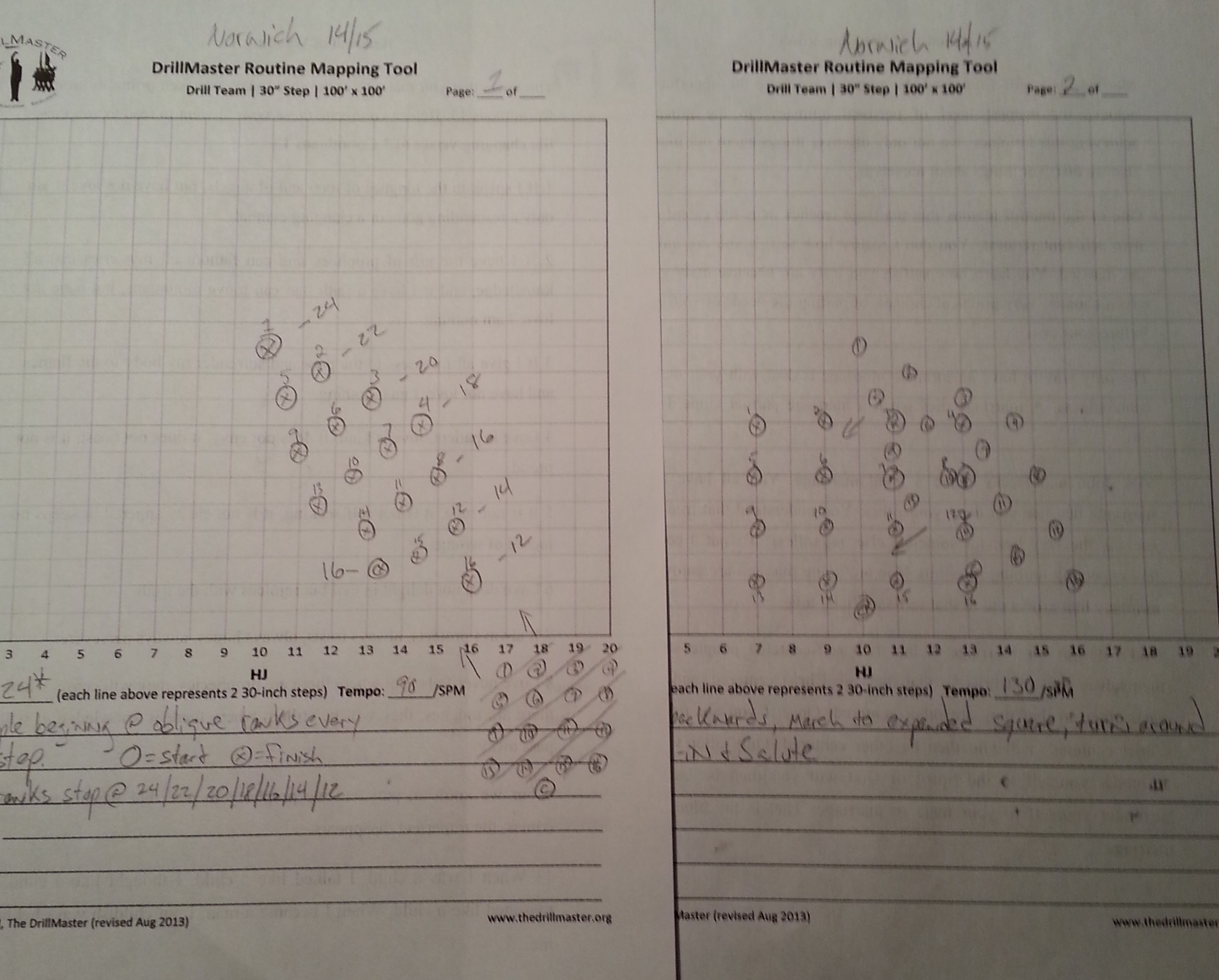
You can breakdown an exhibition drill routine into parts or segments. In this article I show you how to design effectively one segment at a time.
Each segment is made up of marching, body movement, (and rifle manipulation). Working on a routine in segments makes it easier to concentrate just on that segment instead of trying to design the whole routine.
The information provided below is for a soloist, tandem (2), tetrad (4 or 5) or full team (9, 12, 16, 25+) in competition. You can breakdown a routine into as many segments as you wish.
1. The Opening Statement
- Before you enter the drill area, this should be no are than 10 seconds or less.
- Butt slams, chants, quick, powerful movement, and high tosses are examples of great ways to get the attention of your audience and build excitement.
2. March Up to the Report-in
- This includes the report-in.
- This segment of the sequence can be all high energy work or it can have peaks and valleys.
- The report-in should be within the first 2 minutes.
- Block, staggered and wedge formations work well here for the report-in formation.
3. After Report-in
- The transition away from the report-in and the head judge/audience, around 30 seconds to a minute
- This is separated from the Routine Body because it matters how the team transitions away from the report-in; different is a good thing.
4. The Routine Body
- This is the majority of the routine.
- Visual peaks of high intensity work and valleys of relatively low intensity work are a must.
- Display a wide vocabulary of
- Drill moves.
- Body (head, torso, arms and hands) and foot work.
- Equipment (flag, rifle, sword/saber and/or guidon) work.
5. Before Report-out
- It also includes the Report-out.
- This is the transition toward the the head judge, about 30 seconds to a minute, the report-out should be within the last 2 minutes.
- This is separate from the Routine Body because, again, it matters how this transition away is made.
6. After Report-out
- This is the build up to the closing statement.
- A high energy build up is a great way to to create intensity for a powerful report-out.
7. The Closing Statement
- Us this time even if judging stops when the team crosses over the line.
- Your last chance, with an exclamation or an understatement, to “wow” your audience, no more than around 10 seconds long.
- Exclamation: High Energy- creates a clean, powerful ending.
- Understatement: Low energy- can leave the audience wanting more.
Further Breakdown
This adds a couple more segments and might be a more efficient look as you begin to design the routine.
- Opening Statement
- Move to the Report-in
- The Report-in (performance during this time)
- Movement away from the Report-in
- Movement around and effective use of the deck (Body)
- Movement to the Report-out
- The Report-out
- Movement to the Exit
- The Closing Statement
Segment ≠ Time
Just because you use the seven or nine segments above or make six or five segments, they do not equal time. For example, the seven segments do not equal seven minutes. That would not work well because you would be spending too much time for the Opening Statement (for example) and not enough time on the march up to the Report In.
Choose your Distance
Some big moves look great from far away, but when viewed from close up, they lose their impact (think of a ripple line that is just a few feet in front of you and you have to turn your head back and forth like a tennis match, it’s too much).
The same goes for smaller, more intricate work- usually this work requires he soloist or team to be closer to the audience. These aspects should be taken into consideration during the creation process.
Originally written in 2018, updated March 2025.


Comments 3
Good Morning,
How would a HS. Drill team go about getting an armed and unarmed exhibition routine put together. This particular unit is in a rebuilding year with many first time drillers.
Author
Good morning!
I suggest starting with the information here regarding the 7 parts of the routine. Then, be creative and concentrate on just that one segment. You can use my DrillMaster Routine Mapping Tools (free download from the Resources page) to map out where each team member stands and moves.
Here are some links to get you started:
https://thedrillmaster.org/2018/02/01/how-to-write-drill/
https://thedrillmaster.org/2012/11/26/how-to-write-a-military-drill-routine-routine-mapping-tools/
https://thedrillmaster.org/2018/03/27/how-to-write-exhibition-drill-the-boxes-of-three-method/
If you need some help, please let me know.
DM